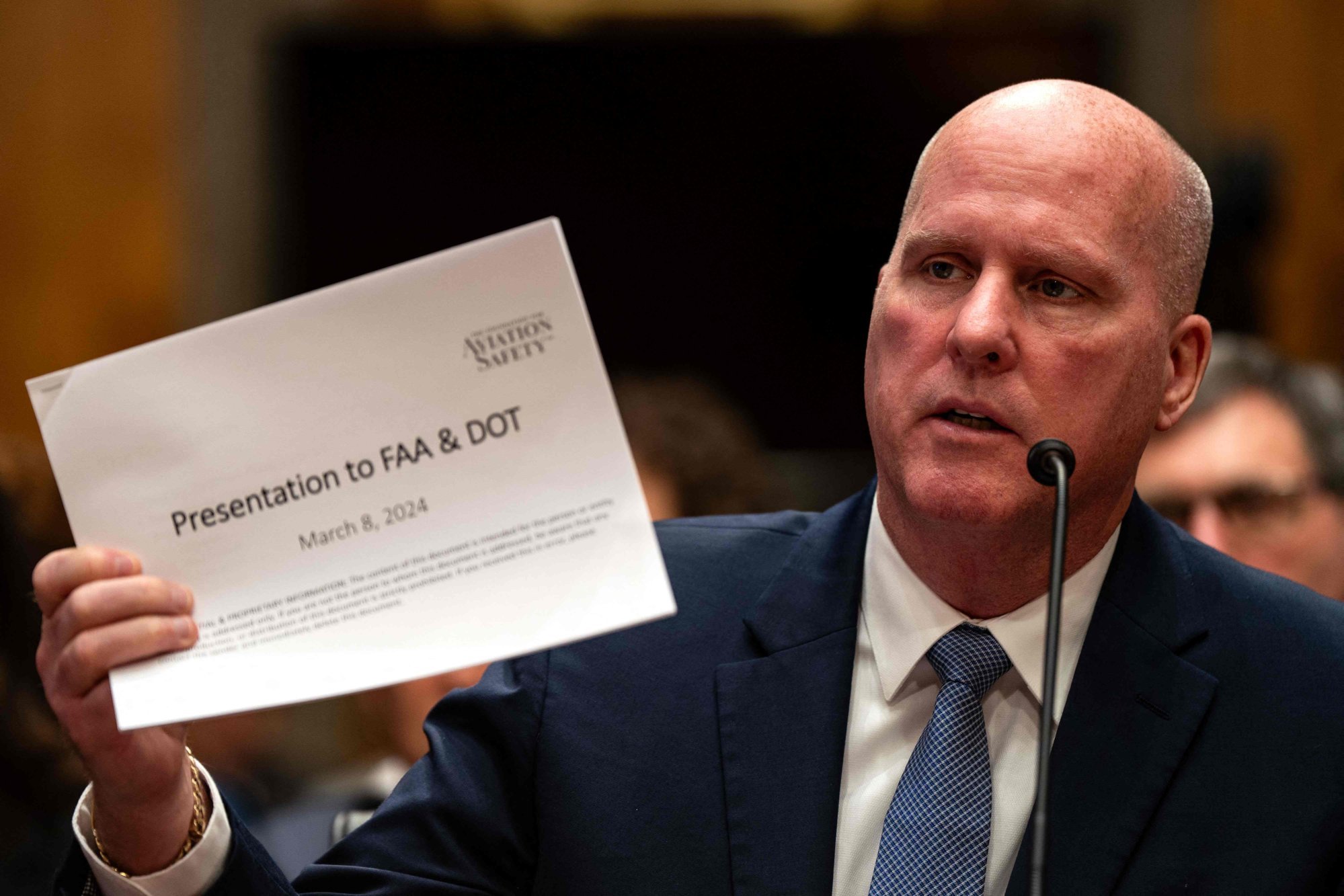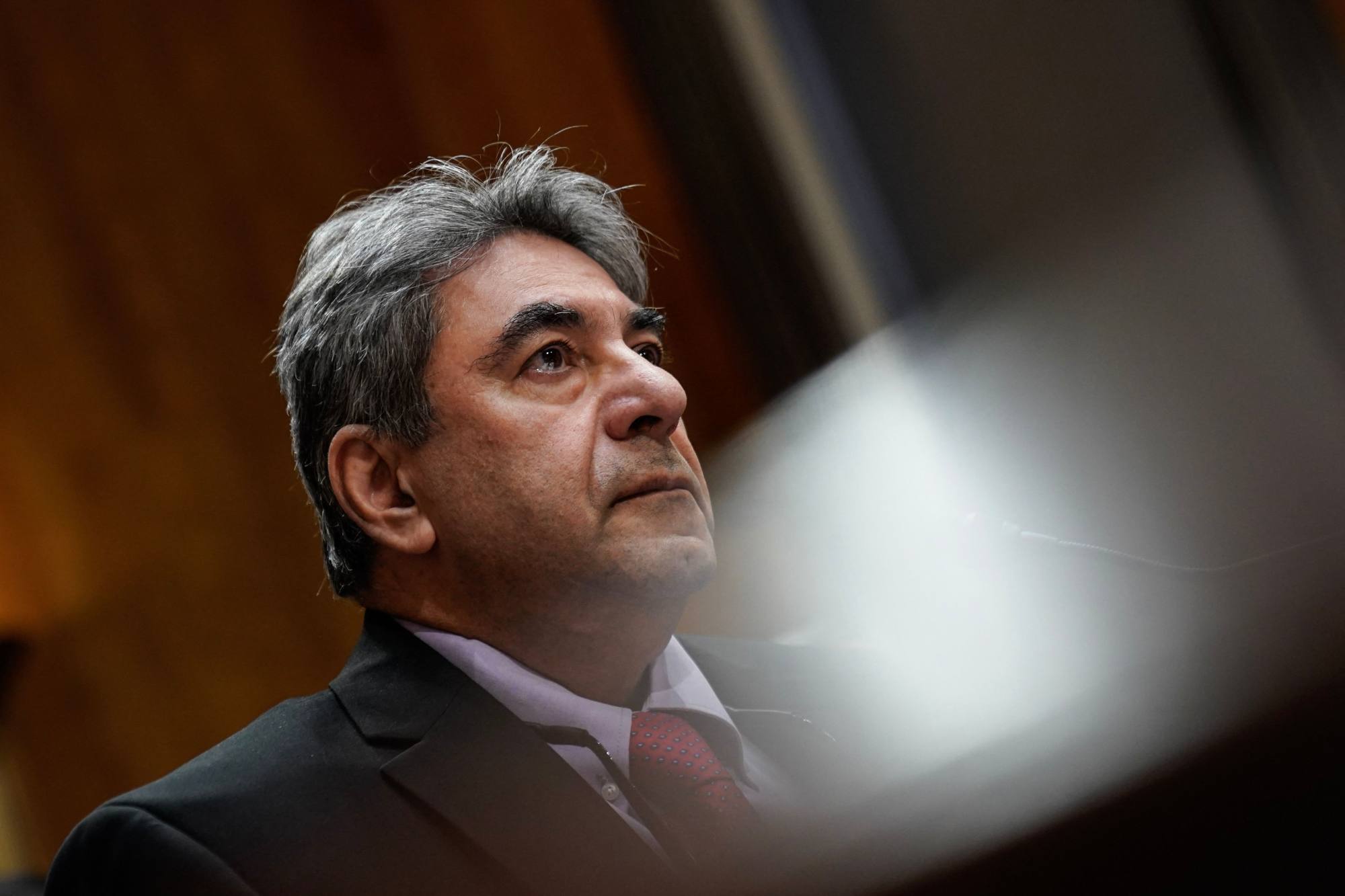Boeing’s safety culture and manufacturing quality, both at the centre of a full-blown crisis following a January mid-air panel blowout, faced scrutiny on Wednesday in two US Senate hearings, as a whistle-blower said he had been told to “shut up” for raising issues.
Boeing has been grappling with a safety crisis after the door plug panel blew off an Alaska Airlines flight that took off from Portland, Oregon, on January 5. The planemaker has undergone a management shake-up, US regulators have put curbs on its production, and deliveries fell by half in March.
Testimony at the US Senate permanent subcommittee on investigations raised questions about missing records surrounding the panel, along with production concerns over two separate Boeing widebody aircraft.
Former Boeing engineer Ed Pierson said he turned over records, sent to him from an internal whistle-blower, to the FBI that he said provided information about the plug.

Boeing has said it believed that required documents detailing the removal of the door plug were never created.
Boeing directed questions to the National Transportation Safety Board, which was not immediately available for comment. The FBI declined to comment.
Whistle-blower Sam Salehpour, a Boeing quality engineer who raised questions about two of the planemaker’s widebody aircraft, said he was told to “shut up” when he flagged safety concerns. He has said that he was removed from the 787 programme and transferred to the 777 plane due to his questions.
Salehpour has claimed Boeing failed to adequately shim, or use a thin piece of material to fill tiny gaps in a manufactured product, an omission that could cause premature fatigue failure over time in some areas of the Boeing 787 Dreamliner. Salehpour said he had reached out to Boeing official Lisa Fahl but was not provided specific safety data.
US officials investigate after Boeing whistle-blower raises concerns about 787
US officials investigate after Boeing whistle-blower raises concerns about 787
Fahl has said the 787, which was launched in 2004, had a specification of five-thousandths of an inch (2.54cm) gap allowance within a five-inch area, or “the thickness of a human hair”.
“When you are operating at 35,000 feet (10.7km),” the size of a human hair can be a matter of life and death, Salehpour told the hearing.
Salehpour’s lawyers had previously said documentation he provided to the FAA would be available at the hearing.
Blumenthal held up a 2021 memo from Salehpour and read a line that said “kicking me out of the programme because I am raising safety concerns” does not help anybody.
Reuters could not immediately find any documents or links posted publicly online.

Boeing has challenged Salehpour’s claims against the 787 and 777, which fly internationally, arguing on Monday it has not found fatigue cracks on nearly 700 in-service Dreamliner planes that have gone through heavy maintenance.
In a statement on Wednesday, Boeing defended the planes’ safety, noting that the global 787 fleet has safely transported more than 850 million passengers, while the 777 has safely flown more than 3.9 billion travellers.
The FAA said in a statement that every aircraft flying is in compliance with the regulator’s airworthiness directives.
Earlier in the day, members of the US Senate Commerce Committee said Boeing needs to do more to improve its safety culture, following a February report commissioned after two crashes involving the 737 Max killed a combined 346 people.
US Senate Commerce Committee Chair Maria Cantwell said she expects Boeing to submit a serious plan in response to a deadline from regulator the Federal Aviation Administration (FAA). In late February, the FAA said Boeing must develop a comprehensive plan to address “systemic quality-control issues” within 90 days.

